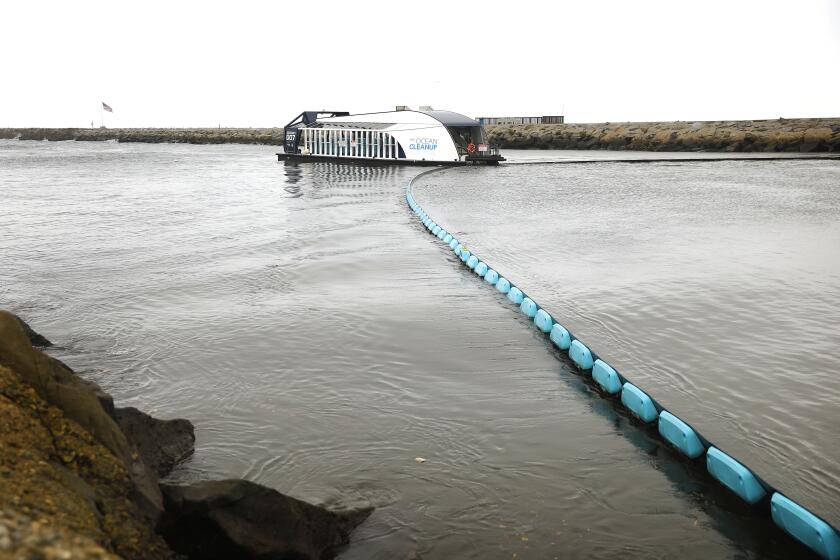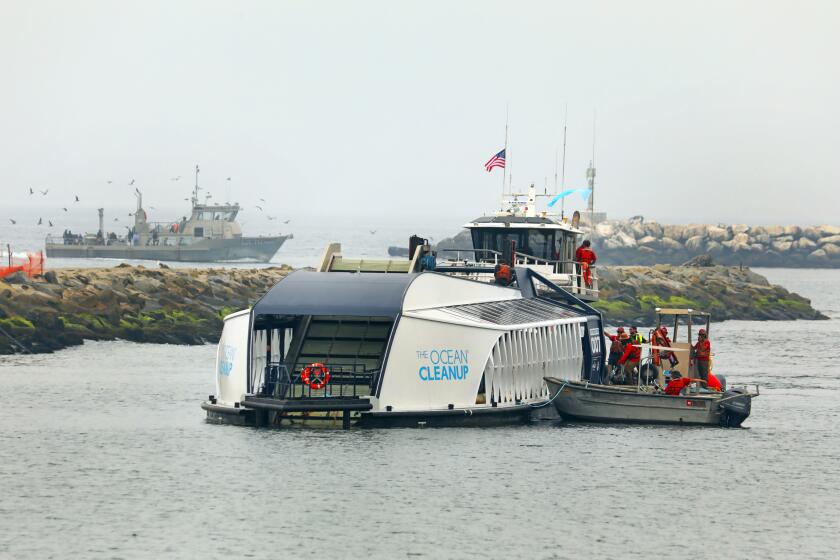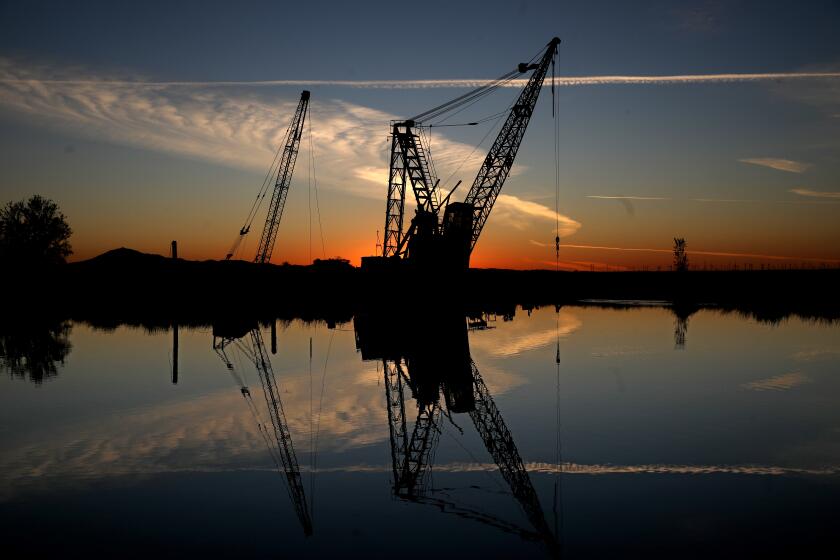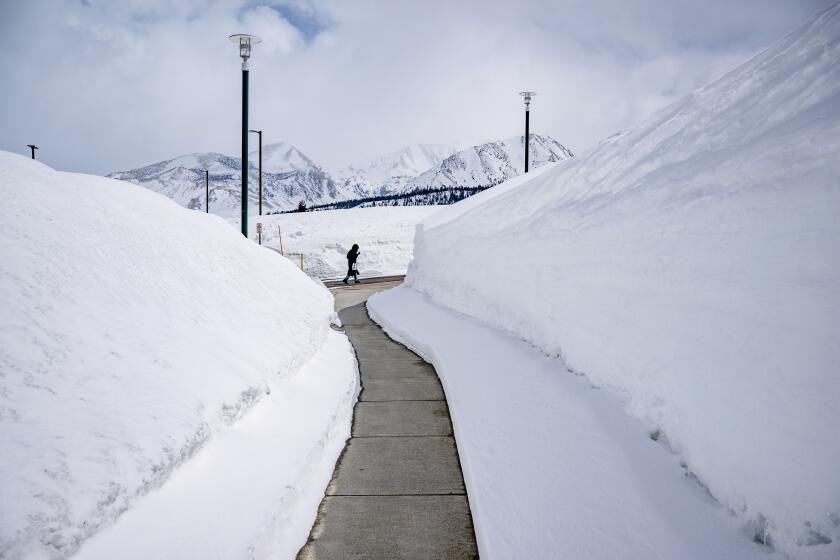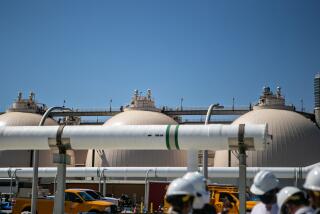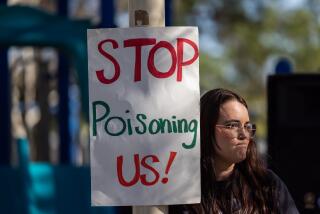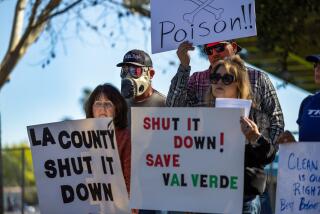77 tons less trash made it into the ocean thanks to this experimental L.A. County device
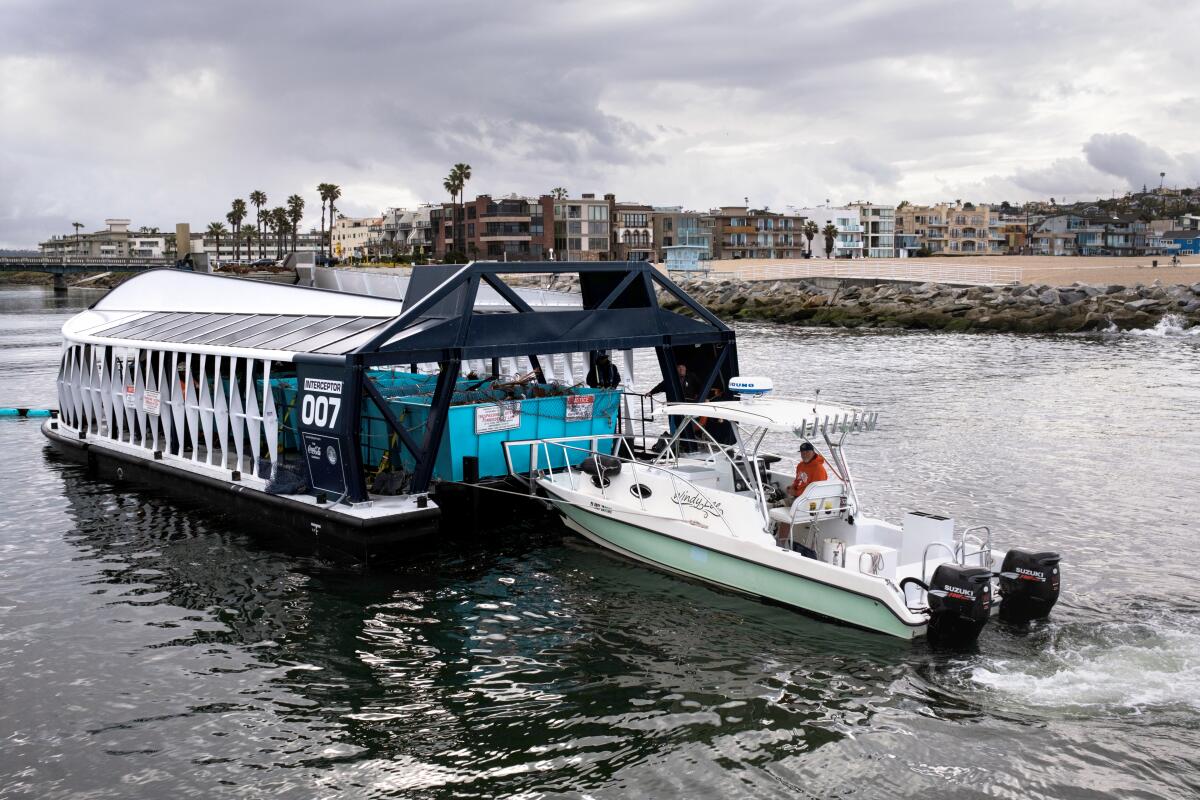
After a historic winter hit California with dozens of atmospheric rivers, the last line of defense protecting the Pacific from much of L.A.’s trash held strong.
In the first storm season of a two-year pilot project, Ballona Creek Trash Interceptor 007 stopped nearly 155,000 pounds of garbage from flowing out to the ocean.
“Its performance has exceeded our wildest expectations,” said Boyan Slat, founder and chief executive of the Ocean Cleanup. The Dutch nonprofit partnered with the Los Angeles County Department of Public Works to introduce the interceptor in October.
Heavy rains have put the Ballona Creek trash collection system to the test, and for the most part it appears to have passed.
The system floats a few hundred yards from the outlet of Ballona Creek into the Pacific Ocean, its twin booms extended to the shoreline to funnel trash to a solar-powered system that lifts objects from the water with a conveyor belt and drops them into six dumpsters. The trash collects in the dumpsters and awaits manual removal.

On a recent Friday morning, members of the public works agency were escorted by a local yacht club to witness what could be the final trash offloading of the season.
The California Yacht Club, which chartered the brief expedition, has partnered with the interceptor project to allow students to see the device in action using club vessels. Its logo will be added to the device, alongside that of Coca-Cola and other sponsors, in the coming weeks.
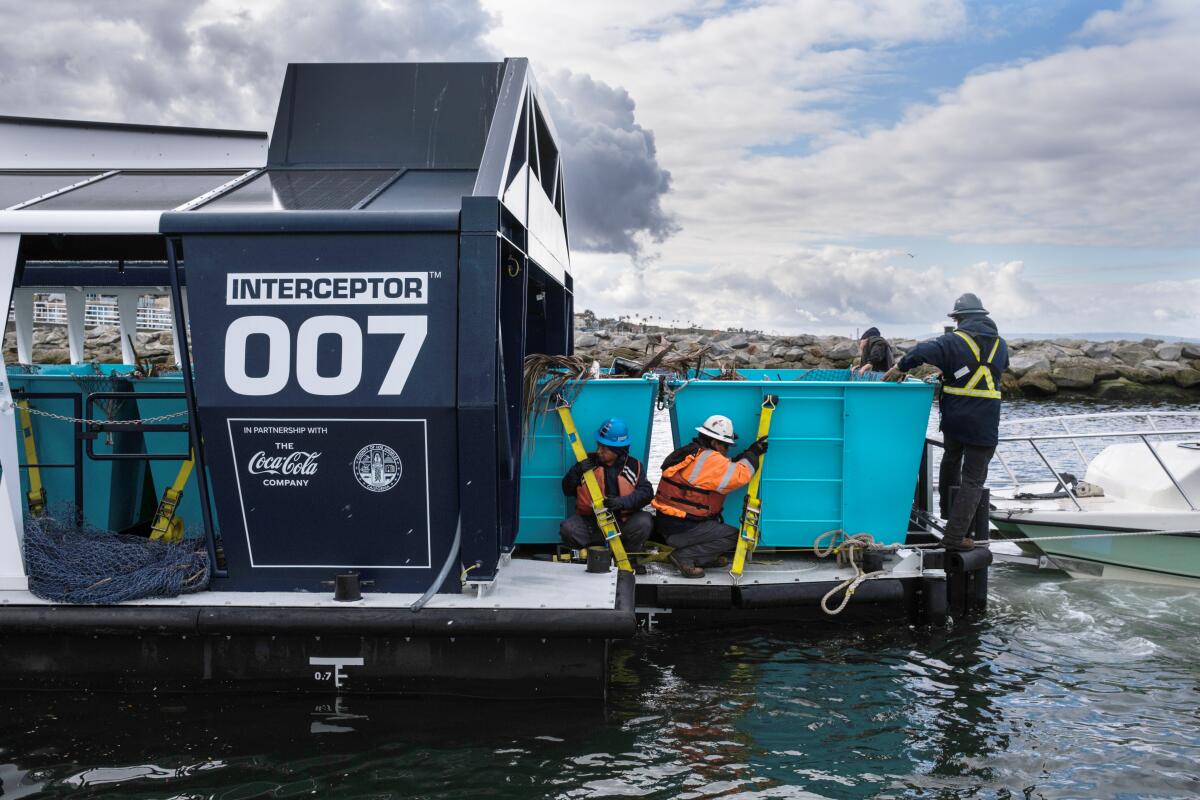
The Ocean Cleanup is not being compensated for the project; the Department of Public Works has staffed the trash interceptor at taxpayers’ expense, by way of the county flood fund with support from contractor Ocean Blue.
Hours after the last major rain of the season Friday, a small motorboat chartered by Ocean Blue approached the interceptor and was attached by crews to the internal barge holding the dumpsters.
The atmospheric river storm hitting California this week presents a test for an experimental waste-capturing system that’s intended to keep plastic bottles, diapers and other trash from flowing into the Pacific.
The boat then towed the barge to the Marina del Rey launch ramp, where additional crews with Ocean Blue were waiting with a crane, a scale and a truck.
The crane slowly lifted a net from each dumpster — the operator shouting out the weight of the debris contained therein — and deposited the contents in a shipping container that would be trucked off for sorting.

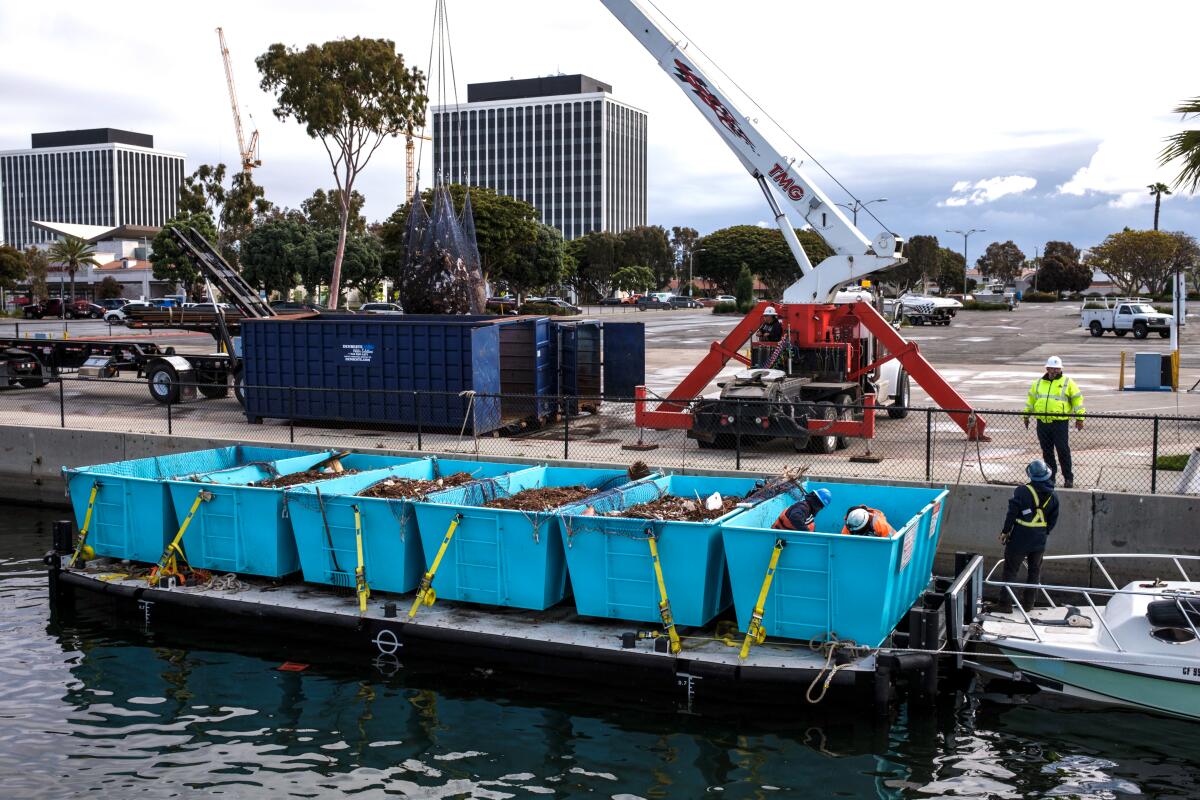
“Thirty-six hundred!” the operator yelled as one particularly full net hung from the crane, to approving nods from several crew members. About a dozen workers participated in the offloading from start to finish, and the haul was 19,880 pounds of trash, according to Department of Public Works spokesman Kerjon Lee.
Paper bags and soda bottles, likely washed into the marina from nearby areas in the previous night’s rain, bobbed around on the water’s surface in the basin, a reminder of the pervasive problem of ocean pollution.
During the winter storms, waves caused one of the interceptor’s booms to tear. The collector is partially operational as it awaits a replacement boom.
In all, the first rainy season of the interceptor’s operation saw the collection of 77 tons of material, the vast majority of which went to landfill.
This first pilot year “had all the challenges we wanted it to have: heavy pollutants, lots of flow,” said Mark Pestrella, the Department of Public Works director. In January, storm-generated waves caused one boom to tear, and it had to be replaced.
According to Lee, L.A. County Department of Beaches and Harbors maintenance crews noted “a 75% reduction” in trash along local beaches adjacent to the interceptor.
About 95% of the water that flowed into the Sacramento-San Joaquin River Delta in the first two weeks of January ended up in the Pacific Ocean. Here’s why.
Though the department has yet to issue its first-year report, which will include the cost of the program, Pestrella said that capturing trash early was “way, way cheaper” than county crews collecting it from beaches.
The device, which will be donated to the county if officials deem its two-year pilot a success, may end up saving taxpayers some money, even when taking into account the costs of staffing it.
Even with the success of Interceptor 007, which Pestrella said was the only one of its kind in the U.S., major problems with pollution in L.A. County waterways persist.
“None of the waterways in L.A. County are considered fishable or swimmable” due to pollution, he said, and tests show “toxicity in every drainage for some pollutant of concern.”
An onslaught of atmospheric rivers hit California this winter, exposing the delicate balance of the systems that provide critical water and can prompt dangerous floods.
He pointed to industrial and corporate polluters, who he said leave cleanup duties to citizens and government. “I don’t see enough corporate participation” in cleanup efforts, he said.
“The burden cannot be all put on the taxpayer, the residential property owner or, for that matter, the renter,” Pestrella said.
But for residents who do want to pitch in, he advised calling (888) 253-2652 or visiting the Clean L.A. website for information about proper trash disposal methods.
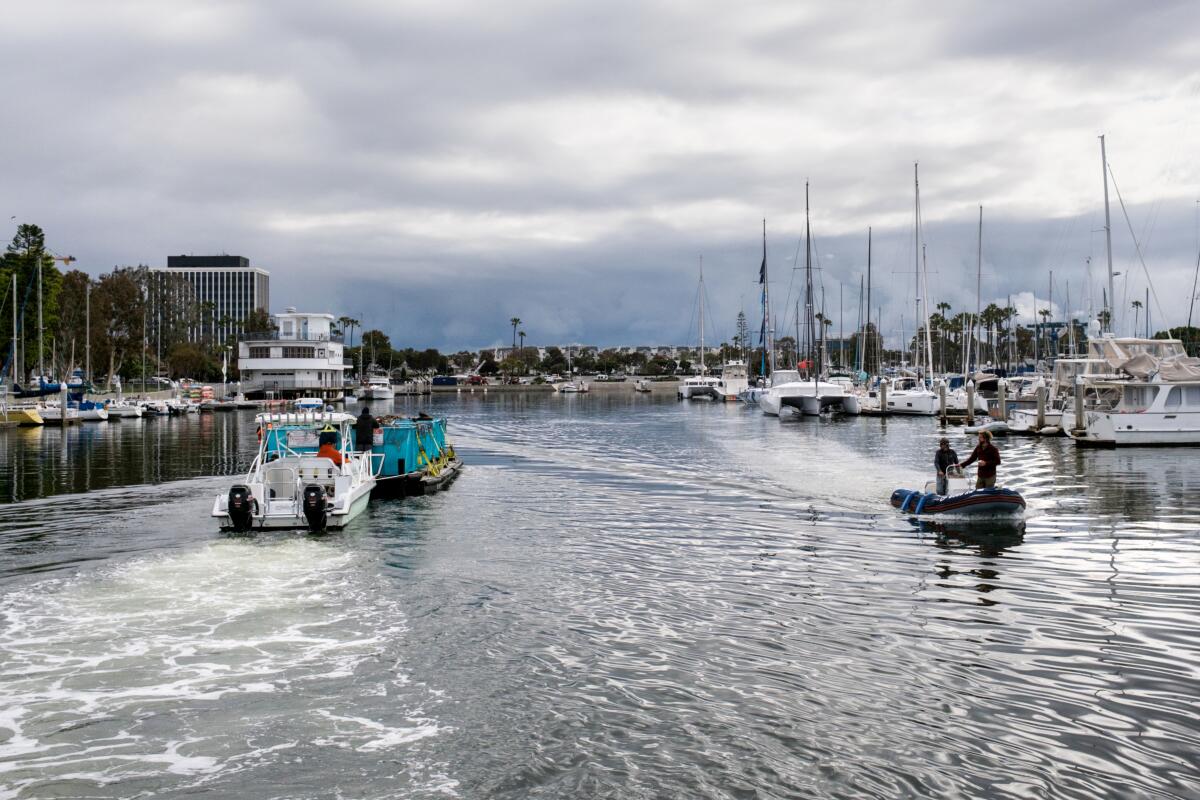
“They’re making a ton of money off of that trash on the front end,” he said, alluding to products, packaging and advertising materials that can end up in waterways, “and we’re picking it up at another cost to the consumer.”
Angelenos produce 4 to 5 pounds of trash per person per day, he said, and too often the trash is disposed of improperly. “The ocean and these rivers,” Pestrella said, “should not be the trash can of our community.”
More to Read
Start your day right
Sign up for Essential California for news, features and recommendations from the L.A. Times and beyond in your inbox six days a week.
You may occasionally receive promotional content from the Los Angeles Times.

